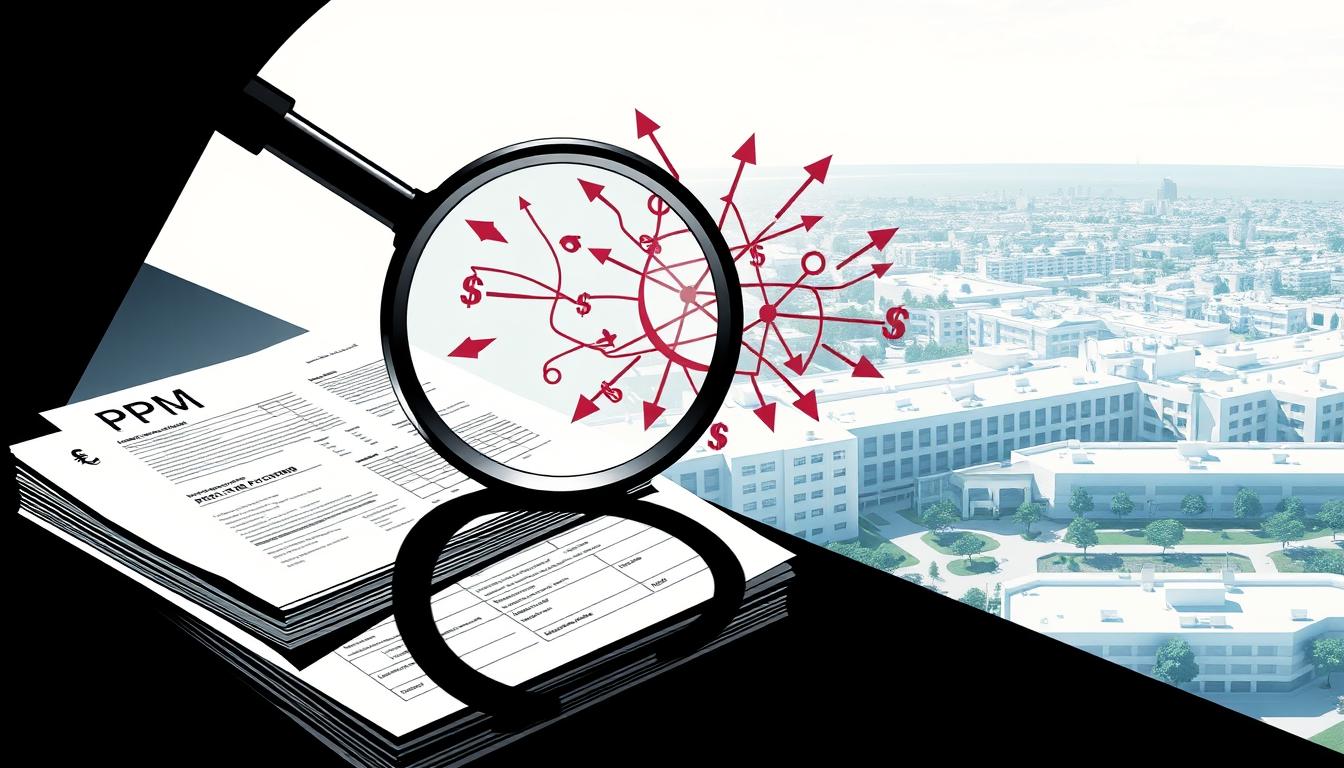You know the sinking feeling when a bill arrives and it doesn’t match your expectations. Many people read only the highlights of a policy and later face exclusions, waiting periods, or pre-authorization rules that create unexpected out-of-pocket costs.
This guide helps you spot where surprises come from — from out-of-network visits that trigger larger hospital bills to prescription formularies that require step therapy before covering certain drugs. You’ll learn simple steps to protect your pocket and plan ahead.
Start by treating your policy as a legal contract. Check network rules, annual caps, and coding limits. Confirm coverage before scheduled services and document prior approvals to reduce later denials.
Key Takeaways
- Read your policy fully to find exclusions and waiting periods.
- Verify provider network status before care to avoid balance billing.
- Confirm prior authorization and keep written approvals.
- Watch prescription rules like step therapy that can raise costs.
- Track spending against out-of-pocket limits to avoid surprises.
Why you pay more than premiums: understanding hidden costs in health insurance today
Monthly premium is only the opening number. When you add deductibles, co-pays, and coinsurance, your annual outlay can be far higher than the sticker price. Many patients lack savings to cover a typical deductible; Bankrate found about 43% of Americans couldn’t cover a $1,000 deductible in 2021.
Search intent decoded: you want clear steps to spot and stop surprise charges.
Premiums vs total cost of care: Separate the monthly premium from the full cost. List expected services, estimate deductibles and co-pays, and factor in coinsurance for imaging or specialist visits.

- Check whether a lower premium raises your deductible or narrows coverage.
- Know what counts toward your out-of-pocket maximum; some hospital or out-of-network bills may not.
- Track prior-year utilization to forecast when you’ll hit the deductible and owe additional expenses.
Practical tip: treat premiums as a baseline and calculate likely total costs before you pick a plan. Confirm network status for services to protect your pocket.
Avoid These Hidden Health Insurance Fees by reading the fine print before you enroll
Look past premiums to see what your plan will actually pay for.
Exclusions and limits can create surprise bills. Scrutinize the policy terms for services and medications that the carrier does not cover. Some therapies and drugs sit outside the formulary or need prior authorization.
Map where co-pays end and coinsurance starts. That shift often raises charges after the deductible is met.
Common traps that raise pocket costs
- Annual or lifetime caps that stop payments after a threshold, exposing patients with chronic needs.
- Waiting periods for pre-existing conditions that delay coverage and force early out-of-pocket bills.
- Step therapy rules that require cheaper medicines first, adding time and expense before full coverage.

| Issue | What to check | Action |
|---|---|---|
| Exclusions | Specific therapies, drugs, or services not listed | Request written confirmation from the insurance company |
| Cost-sharing | Where co-pay becomes coinsurance | Estimate charges for likely services |
| Limits & waiting | Annual/lifetime caps and waiting periods | Choose plans with higher caps or shorter waits |
Tip: List your regular services and meds, then compare plans to avoid surprises and lower long-term pocket costs.
Network pitfalls: how out-of-network providers inflate your bill
A hospital on your plan does not guarantee every clinician there is covered the same way.

In-network vs out-of-network: negotiated rates and balance billing risks
Negotiated rates cut your costs. When a clinician is out of network, you can face balance billing that raises your final bill.
Facility vs professional charges: being in-network at the hospital but out-of-network for specialists
Make it a habit to verify both the facility and each clinician before scheduled care. A hospital may be in network while anesthesiologists or radiologists are not.
- Call the clinic and confirm network status for surgeons, anesthesiologists, radiologists, and pathologists.
- Ask for written estimates and pre-authorization that list contracted coverage.
- Keep NPI numbers and written confirmations to contest misclassified claims.
- Use the insurer’s directory and recheck the week of service, since network rosters change.
| Risk | What to verify | Action |
|---|---|---|
| Facility in-network, clinician out | Individual contracts for each clinician | Request in-network substitution or written coverage |
| Balance billing | No negotiated rate for out-of-network care | Appeal with documentation and NPI numbers |
| Post-acute referrals | Labs or imaging routed out-of-network | Confirm referral destination before service |
Pre-authorization traps that lead to denied claims and full-price charges
Before you schedule any procedure, confirm whether your plan needs prior approval for that exact service. Many policies require pre-authorization for imaging, surgeries, and certain therapies. If you skip this step, a denied claim can leave you responsible for full charges.

Procedures and imaging that commonly require prior approval
Compile a short checklist of services that often need approval: MRIs, CT scans, inpatient surgeries, and specialty treatments. Share that list with your provider so approvals start early.
How to verify and document approvals to protect your claim
Ask your provider to initiate the process well before the date of service. The approval can take days and may need clinical notes or test results.
- Get written authorization numbers and save screenshots or PDFs of approval notices.
- Confirm the authorization matches service codes (CPT/HCPCS), the provider, and the date range.
- Ask billing teams to verify both facility and clinician are covered to prevent split denials.
- Track expiration dates and request extensions if you reschedule.
Document every call and upload copies to your records. If a claim is disputed, clear proof of prior approval often resolves denials faster and protects patients from unexpected out-of-pocket costs.
Prescription drug fine print: formularies, step therapy, and tiered pricing
A drug’s place on the formulary often decides whether you pay a little or a lot. Most plans put medicines into tiers. Non-preferred or specialty tiers can raise your charges at the pharmacy quickly.

Formulary exclusions and non-preferred tiers that spike out-of-pocket costs
Review your plan’s formulary before the first fill. Know which drugs are covered, which are higher-cost tiers, and which require a prior authorization.
Step therapy and prior authorization for medications
Step therapy can force you to try cheaper options first. If your provider prefers a particular drug, ask whether step therapy applies and if prior authorization is required.
Appeals and alternatives: asking your provider about therapeutic equivalents
Talk to your healthcare provider about generics or therapeutic equivalents that the plan covers better. If an alternative fails, have your provider document that fact to strengthen appeals.
“Document failed alternatives and contraindications—this often improves approval odds for brand or specialty drugs.”
- Confirm prior authorization before you leave the clinic and note the approval number.
- Compare mail-order versus retail pricing in your plan network for potential savings.
- Re-check formulary at each renewal; coverage can change year to year.
The PBM problem: spread pricing and kept rebates that raise your plan’s drug spend
What your plan pays for a prescription may be very different from what the pharmacy receives. Pharmacy Benefit Managers (PBMs) can bill your company more than they reimburse the pharmacy. That gap, called spread pricing, creates hidden costs inside plan spending.

- Spread pricing inserts an extra margin between pharmacy reimbursement and employer charges, increasing overall drug costs and sometimes raising fees for plan sponsors.
- Compare pharmacy reimbursement lines to invoices from your PBM. Discrepancies reveal where value is being siphoned away from your company and your members.
- Ask for quarterly reports that break down ingredient cost, dispensing fees, and amounts billed to spot irregularities.
Rebates that don’t reach you—and why pass-through PBMs matter
- Some PBMs retain manufacturer rebates rather than returning them. That practice hides savings that should offset premiums and member outlays.
- Request a pass-through model that returns 100% of rebates and eliminates spread pricing so savings become visible and auditable.
- Coordinate with your broker to benchmark offers and require written guarantees on rebate returns and transparent compensation tied to measurable results.
Protect patients and your budget: demand net cost transparency for every drug and tie PBM pay to outcomes, not secret margins.
Employer plan fees you don’t see: broker overrides, TPA “percentage of savings,” and claim editing charges
Employer plans can carry subtle vendor charges that quietly eat into promised savings. You might think negotiated discounts go straight to your plan, but third-party payouts change the math.
Broker commissions and overrides can bias recommendations. Ask your broker to disclose all compensation, including overrides from PBMs, TPAs, and network providers. If a broker receives vendor overrides, their plan advice may favor partners over your company’s best interests.

TPA percentage-of-savings that siphon negotiated discounts
Some TPAs or networks bill a cut of what they call “savings.” For example, lowering an out-of-network bill from $500,000 to $300,000 can trigger a steep percentage fee on the $200,000 difference.
One documented plan saw such charges rise from $550,000 to $2.6 million in a few years. You should review historical reports for unusually high out-of-network savings charges.
Claim editing charges: paying twice to enforce contracts
Claim editing audits can be billed separately, meaning you pay once for network access and again to verify contract compliance. Challenge contingency pricing and request flat, transparent administrative costs instead.
- Require written disclosure of all vendor compensation.
- Refuse percentage-of-savings models and demand pass-through arrangements that let your plan keep the full savings.
- Score vendors on transparency, auditability, and how much savings reach your patients and benefits budget.
| Risk | What to verify | Action |
|---|---|---|
| Broker overrides | Undisclosed vendor payments | Request full compensation report |
| Percentage-of-savings | Cut taken from negotiated discounts | Negotiate flat fees or pass-through TPAs |
| Claim editing | Separate audit charges | Consolidate admin fees and remove contingency cuts |
Bottom line: restructure contracts to eliminate contingency skims and align every partner with measurable savings goals. That protects your company and preserves benefits dollars for employees.
Deductibles, co-pays, coinsurance, and out-of-pocket maximums: what really counts toward your cap
Know which charges actually count toward your yearly cap before you file any claims.
Most plans stop paying after you hit the out-of-pocket maximum for covered services. But not everything you pay will count toward that cap. Excluded services, out-of-network charges, and some benefit categories can be left out.

Services that don’t apply to your OOP max—and how that affects budgeting
Confirm whether your deductible, co-pays, and coinsurance add to the same tally. Some tiers credit differently. That changes when 100% coverage begins and shifts your pocket costs.
- Save EOBs and track claims in the insurer portal to watch accumulation.
- Check if out-of-network bills or excluded categories are omitted from the cap; they can keep creating pocket costs late in the year.
- Compare higher-premium plans with lower deductibles if you expect frequent medical expenses to reduce early-year cash strain.
| Charge type | Usually counts toward OOP | Action |
|---|---|---|
| In-network deductible payments | Yes | Track via EOBs and portal |
| Co-pays & coinsurance (in-network) | Often yes | Confirm plan language for each service |
| Out-of-network bills | Sometimes no | Verify if credited; negotiate or appeal |
| Excluded services (non-covered) | No | Budget separately as direct medical expenses |
| Family vs individual caps | Varies | Read policy rules on aggregation |
“Track claims continuously and review your policy at open enrollment to match coverage to real spending.”
Smart ways to save money and avoid surprises on your insurance plan
Small verification steps before care can stop surprise charges and save money over a year.
Before you choose a plan: map expected visits, prescriptions, and procedures to network lists, drug tiers, exclusions, and pre-authorization rules. Compare plans by coverage, not just premium, so you save money by avoiding mismatches.
Practical checks before enrollment
- Confirm that your regular providers and ancillary healthcare providers are in-network.
- Scan the formulary for your meds and note any step therapy or prior authorization requirements.
- Ask direct questions about coverage limits and referral processes so the claims process is clearer.
Actions to take during the year
Get all prior approvals in writing. Save authorization numbers, letters, and service codes.
Track expenses in the insurer portal and a simple ledger to see when coinsurance changes or you hit your out-of-pocket maximum.
For employer plans and vendor selection
Pick TPAs and PBMs that disclose pass-through rebates and flat admin charges. That transparency creates tangible savings for companies and patients.
“Insist on vendor scorecards and written rebate returns so plan savings reach members—transparency changes outcomes.”
| Focus | What to verify | Why it matters |
|---|---|---|
| Network | Primary providers, surgeons, and imaging clinicians | Prevents balance billing and surprise out-of-network charges |
| Drug coverage | Formulary tiers, step therapy, prior authorizations | Reduces pharmacy costs and avoids denied fills |
| Vendor transparency | PBM rebate pass-through, TPA fee models | Protects benefits budget and increases visible savings |
Routine matters: revisit coverage each year since plans change. Make these steps standard and you will reduce costs and limit surprises all year long.
Conclusion
Take control of bills by making verification a routine part of every care decision.
Read the fine print, confirm network status, and secure prior authorization before you schedule care.
Check that both the hospital and each provider are in-network so you don’t face surprise charges from out-of-network clinicians.
Demand transparency from PBMs and TPAs and prefer pass-through models that return rebates and convert savings into lower premiums and better benefits.
Keep written authorizations, EOBs, and claim notes to resolve disputes fast and protect your deductible and out-of-pocket limits.
When you pair vendor transparency with disciplined verification, you cut unexpected bills, improve savings, and make your healthcare choices far more predictable.